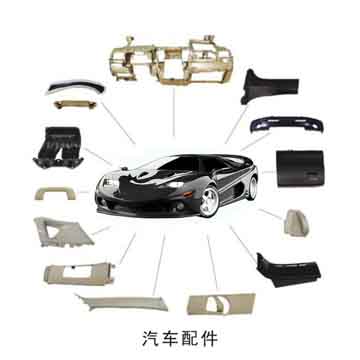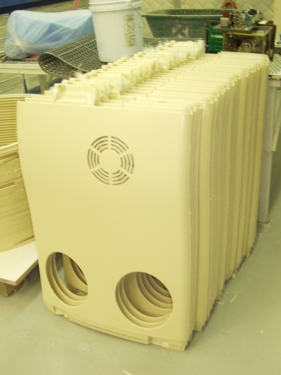Plastic injection molding is a popular and widely used manufacturing process for creating plastic parts and products. It involves injecting molten plastic material into a mold under high pressure and then cooling and solidifying it to create the desired shape. This process is widely used in various industries such as automotive, consumer goods, electronics, and medical devices.
The Process:
The process of plastic injection molding involves six major stages: clamping, injection, dwelling, cooling, mold opening, and ejection.
1. Clamping: The first step in the process is clamping, where the two halves of the mold are clamped together under high pressure. This ensures that the mold remains closed during the injection and cooling process, preventing any plastic from leaking.
2. Injection: Once the mold is clamped, the next step is to inject the molten plastic material into the mold cavity through a nozzle. The plastic material is usually in the form of small pellets or granules and is heated and melted to a liquid state before being injected into the mold. The injection process is done under high pressure to ensure that the plastic fills the entire mold cavity and any small details or features of the product.
3. Dwelling: After the mold is filled with the melted plastic material, a short pause is allowed to ensure that the material has completely filled the mold and there are no air pockets or gaps.
4. Cooling: The next step in the process is cooling. The molten plastic material cools and solidifies in the mold, taking the shape of the mold cavity. This step is crucial as it determines the final shape and quality of the plastic part. The cooling time varies depending on the type of plastic material, the size and complexity of the product, and the mold design.
5. Mold Opening: Once the plastic has cooled and hardened, the mold halves are opened, and the product is ejected. The product may still have some imperfections, which can be removed in secondary processes such as trimming or machining.
6. Ejection: The final step in the process is ejection, where the product is pushed out of the mold using ejector pins or air blasts. The mold halves are then closed, and the process repeats for the next cycle.
Materials Used:
There are various types of plastic materials used in injection molding, including thermoplastics, thermosets, and elastomers. Some of the commonly used thermoplastics include polypropylene, polyethylene, polystyrene, and ABS (acrylonitrile butadiene styrene). These are popular choices due to their high strength, flexibility, and low cost. Thermosets, such as epoxy resins and phenolic resins, are also used for their excellent heat and chemical resistance. Elastomers, such as rubber, are used for their elasticity and flexibility.
Advantages and Disadvantages:
There are several advantages of plastic injection molding, which make it a preferred choice for manufacturing plastic products. Some of the significant advantages include cost-effectiveness, high production rates, and design flexibility. Injection molding allows for high-volume production, making it a cost-effective option for large quantities of products. It also has a high level of design flexibility, allowing for complex and intricate designs to be produced with high precision.
However, there are also some disadvantages to consider when choosing plastic injection molding. One significant disadvantage is the initial investment required for designing and manufacturing the molds. These molds can be expensive and require skilled professionals to design and maintain them. Additionally, the process is not suitable for small production runs as the initial setup can be time-consuming and expensive.
Impact on the Environment:
The production of plastic products using injection molding has a significant impact on the environment. The use of fossil fuels in the production of plastic materials contributes to air pollution and the emission of greenhouse gases. Moreover, the disposal of plastic waste is a growing concern, as it takes hundreds of years to decompose, leading to pollution of land and water bodies. However, advancements in technology have led to the use of biodegradable and recyclable plastics, reducing the environmental impact of plastic injection molding.

Applications:
Plastic injection molding has a vast range of applications across various industries. Some of the common applications include:
1. Automotive Industry: Plastic injection molding is extensively used in the automotive industry for manufacturing parts such as bumper covers, dashboards, interior trims, and door panels.
2. Consumer Goods: The production of consumer goods such as toys, kitchenware, and electronic devices also heavily relies on plastic injection molding.
3. Medical Devices: The medical industry also utilizes injection molding for producing medical devices such as syringes, catheters, and surgical instruments.
4. Electronics: The production of electronic components, such as computer keyboards, cellphone cases, and speakers, also uses plastic injection molding.
ShenZhen GOODBO MOULD LIMITED is your professional and efficient service partner, and your best supplier of Blow Molding,Multi color injection molding,Mold standard components,Plastic injection,Die Casting Mold,Mock up sample and other products. Our products have a wide variety, excellent quality, reasonable prices, and are widely recognized and trusted by end users. With our innovative, dedicated, and experienced team, we can provide your mold manufacturer with the tools, products, and solutions they need.
Our factory is located in Shenzhen, the famous "manufacturing capital" of China. Having a professional management team and adopting a modern horizontal open management model. We define quality as the overall customer satisfaction and actively promote standardization of components and management. GoodBo Mould has global customers such as Media,Nissan,HP,KONKA,Canon,Sony,Samsung,Ford,HONDA. We believe that "high quality comes from every detail", which is why we win customer loyalty. We welcome you to explore various possibilities.
What is the mechanism of plastic injection molding?
Injection molding is a process in which a thermoplastic polymer is heated above its melting point, resulting in the conversion of the solid polymer to a molten fluid with a reasonably low viscosity. This melt is mechanically forced, that is, injected, into a mold in the shape of the desired final object.


